#Sustainable denim industry
Explore tagged Tumblr posts
Text
Green Denim for A Sustainable Future
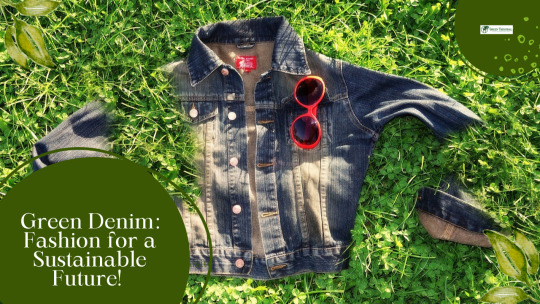
In recent years, sustainability has emerged as a pressing issue across a wide range of industries, and the fashion industry is no exception. As consumers become increasingly aware of the environmental consequences of their choices, there has been a significant surge in the demand for eco-friendly and sustainable clothing options. One particular sector within the fashion industry that has experienced a notable transformation is denim production. With the emergence of green denim, individuals with a passion for fashion can now fully embrace sustainable practices without sacrificing their personal style.
The traditional methods of denim production have long been associated with substantial environmental impact. The excessive water consumption, chemical pollution, and high carbon footprint of conventional denim manufacturing have raised serious concerns among environmentally conscious consumers. However, the rise of green denim has brought about a positive change, offering a promising solution for those seeking sustainable fashion choices.
The increasing popularity of green denim can be attributed to several factors. Firstly, consumers are now more informed and aware of the detrimental effects of traditional denim production on the environment. They are actively seeking alternatives that align with their values and desire for sustainability. As a result, fashion brands and manufacturers have recognized this shift in consumer preferences and have begun to adapt their practices to meet the demand for eco-friendly denim.
Green denim entails a comprehensive approach to denim production, incorporating environmentally friendly practices at every stage of the manufacturing process. From the cultivation of organic cotton to the manufacturing and finishing processes, sustainable techniques are employed to minimize the negative impact on the environment. This holistic approach enables fashion enthusiasts to enjoy denim products that are not only stylish but also ethically and ecologically sound.
One of the key components of green denim production is the use of organic cotton. Unlike conventionally grown cotton, which relies heavily on synthetic fertilizers, pesticides, and genetically modified organisms (GMOs), organic cotton is cultivated without these harmful inputs. By opting for organic cotton, green denim manufacturers reduce water pollution, protect biodiversity, and promote soil health. This shift towards organic cotton cultivation significantly contributes to a more sustainable future for denim production.
Another crucial aspect of green denim is the adoption of natural indigo dyes. Traditionally, denim fabrics were dyed using synthetic indigo, which is not only environmentally harmful but also poses health risks for the workers involved in the dyeing process. In contrast, natural indigo dyes are derived from plants and offer a biodegradable and less toxic alternative. By using natural indigo, green denim manufacturers ensure that the dyeing process is more sustainable and safer for both the environment and the workers.
Moreover, water conservation plays a pivotal role in green denim production. Conventional denim manufacturing processes consume vast amounts of water throughout various stages, such as cotton cultivation, dyeing, and finishing. However, green denim manufacturers have implemented innovative dyeing techniques that minimize water usage without compromising on the quality and appearance of the denim. Techniques like foam dyeing and laser technology significantly reduce water consumption, alleviating water scarcity concerns and reducing the environmental impact of denim production.
Energy efficiency is also a crucial focus in green denim production. Manufacturers are increasingly adopting renewable energy sources and investing in energy-efficient machinery to minimize the carbon footprint associated with denim manufacturing. By reducing energy consumption and transitioning to cleaner energy sources, green denim contributes to mitigating climate change and creating a more sustainable future.
In addition to these sustainable practices, green denim manufacturers prioritize recycling and upcycling denim waste. Discarded garments and denim scraps are repurposed into new products or incorporated as recycled fibers in the production process. This circular approach to denim production minimizes textile waste, conserves resources, and promotes a more sustainable and circular economy.
The benefits of green denim extend beyond environmental considerations. By choosing green denim, consumers actively support fair labor practices and social responsibility. Green denim manufacturers prioritize the welfare of workers, providing safe working conditions and fair wages. They also eliminate harmful chemicals from the production process, protecting the health and well-being of the workers involved. Thus, embracing green denim is not only an eco-friendly choice but also a commitment to supporting ethical and sustainable fashion practices.
The rise of green denim has revolutionized the denim industry, offering a sustainable and stylish alternative to traditional denim production. Through the adoption of organic cotton cultivation, natural indigo dyes, water conservation measures, energy efficiency, and recycling initiatives, green denim manufacturers have successfully addressed the environmental concerns associated with denim production. By choosing green denim, fashion enthusiasts can make a significant positive impact on the environment and support brands that prioritize sustainability and ethical practices. Green denim represents a step towards a more sustainable future, where fashion and environmental consciousness can coexist harmoniously.
The Environmental Impact of Traditional Denim Production
Before delving into the realm of green denim, it's essential to understand the environmental impact associated with traditional denim production. Traditional denim manufacturing processes are notorious for their excessive water usage, chemical pollution, and high carbon footprint.
Conventional denim production requires large amounts of water for various stages, including cotton cultivation, dyeing, and finishing. According to the World Wildlife Fund (WWF), it takes around 2,000 gallons (7,600 liters) of water to produce a single pair of jeans. This water-intensive process depletes natural resources and contributes to water scarcity in many regions.
Additionally, the dyeing and finishing processes involve the use of hazardous chemicals, such as synthetic indigo dyes and toxic fixatives. These chemicals not only pose a threat to the environment but also to the workers involved in the production process. Furthermore, the energy-intensive machinery and transportation required for traditional denim production contribute to greenhouse gas emissions, exacerbating climate change.
The Rise of Green Denim
Recognizing the need for sustainable alternatives, the fashion industry has started to embrace green denim. Green denim refers to denim products that are produced using eco-friendly and socially responsible methods. These methods aim to minimize the negative impact on the environment and promote fair labor practices throughout the supply chain.
Green denim involves a holistic approach to denim production, from the cultivation of organic cotton to the manufacturing and finishing processes. By adopting innovative techniques and materials, manufacturers can significantly reduce the environmental footprint of denim production.
Sustainable Practices in Green Denim Production
Green denim manufacturers prioritize sustainable practices at every stage of production. One of the fundamental changes involves the use of organic cotton. Unlike conventional cotton, organic cotton is cultivated without the use of synthetic fertilizers, pesticides, and genetically modified organisms (GMOs). This reduces water pollution, protects biodiversity, and promotes soil health.
Furthermore, green denim manufacturers employ natural indigo dyes, which are derived from plants, rather than synthetic indigo. Natural indigo dyes are biodegradable and less harmful to both the environment and the workers who handle them. Additionally, manufacturers minimize water usage through innovative dyeing techniques, such as foam dyeing, which requires less water compared to traditional dyeing methods.
To reduce the energy consumption associated with denim production, green denim manufacturers employ renewable energy sources and energy-efficient machinery. They also focus on recycling and upcycling denim waste, repurposing discarded garments into new products or incorporating recycled fibers into their production processes.
The Benefits of Green Denim
Green denim offers a range of benefits, making it an attractive choice for both consumers and fashion brands. Firstly, green denim promotes sustainable agriculture practices by encouraging the cultivation of organic cotton. This reduces the reliance on synthetic chemicals and protects the health of farmers and surrounding ecosystems.
Secondly, green denim contributes to water conservation by implementing water-efficient dyeing techniques and minimizing water usage throughout the production process. This not only helps to alleviate water scarcity issues but also reduces pollution from chemical dyes and wastewater discharge.
Thirdly, green denim supports fair labor practices and social responsibility. Manufacturers prioritize the welfare of workers by providing safe working conditions, fair wages, and eliminating harmful chemicals from the production process. By choosing green denim, consumers can support brands that value ethical and sustainable practices.
Lastly, green denim offers consumers a stylish and eco-friendly option. With advancements in technology and design, green denim is now available in a variety of styles, cuts, and washes, catering to diverse fashion preferences. From high-end designer labels to affordable fashion brands, green denim has made its mark in the fashion industry, proving that sustainability and style can coexist.
Embracing Green Denim: How You Can Make a Difference
As consumers, we have the power to drive change by making conscious choices in our fashion purchases. Here are a few ways you can embrace green denim and contribute to a sustainable future:
Choose green denim brands: Look for fashion brands that prioritize sustainability and transparency in their denim production. Check for certifications such as GOTS (Global Organic Textile Standard) and OCS (Organic Content Standard) to ensure the authenticity of organic cotton.
Extend the lifespan of your denim: Invest in quality green denim pieces and take care of them properly to ensure longevity. Wash your denim sparingly, using cold water, and air dry them whenever possible. This reduces energy consumption and preserves the color and shape of your denim.
Support circular fashion initiatives: Explore options for recycling or upcycling your old denim. Many brands and organizations offer programs to collect and repurpose old denim into new products. By participating in these initiatives, you contribute to reducing textile waste and promoting a circular economy.
Educate yourself and spread awareness: Stay informed about sustainable fashion practices and share your knowledge with others. By raising awareness about the environmental impact of traditional denim production and the benefits of green denim, you can inspire others to make more conscious fashion choices.
Embracing Green Denim for a Sustainable Future
In conclusion, green denim offers a sustainable and stylish alternative to traditional denim production. By prioritizing organic cotton, water conservation, renewable energy, and fair labor practices, green denim manufacturers are paving the way for a more eco-friendly fashion industry. As consumers, we have the ability to drive change by supporting green denim brands, extending the lifespan of our denim, and spreading awareness about sustainable fashion. By embracing green denim, we can contribute to a more sustainable future and make a positive impact on the environment and society as a whole.
#Sustainable denim brands#Eco-friendly denim production#Organic cotton denim#Green denim fashion#Environmental impact of denim production#Sustainable fashion choices#Eco-conscious denim trends#Green denim manufacturing techniques#Stylish and sustainable denim#Benefits of green denim#Sustainable denim for conscious consumers#Ethical denim production#Green denim revolution#Sustainable denim alternatives#Eco-friendly jeans for a better planet#Green denim: Fashion with a purpose#Sustainable denim industry#Organic denim clothing#Eco-conscious denim enthusiasts#Environmentally friendly denim manufacturing#Green denim for eco-savvy fashionistas#Sustainable denim innovation#Green denim: The future of fashion#Eco-friendly denim brands to follow#Sustainable denim for a greener world#Green denim: Style meets sustainability#Conscious denim choices for eco warriors#Sustainable denim trends to watch#Eco-friendly denim solutions#Green denim: Embracing a sustainable lifestyle
0 notes
Text


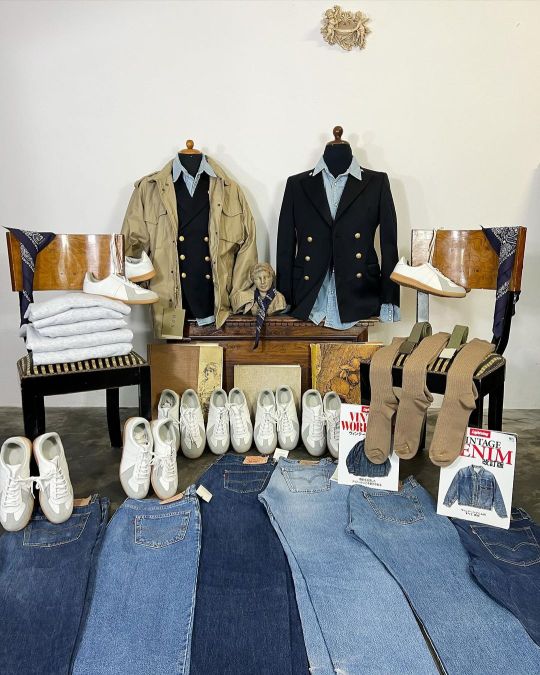
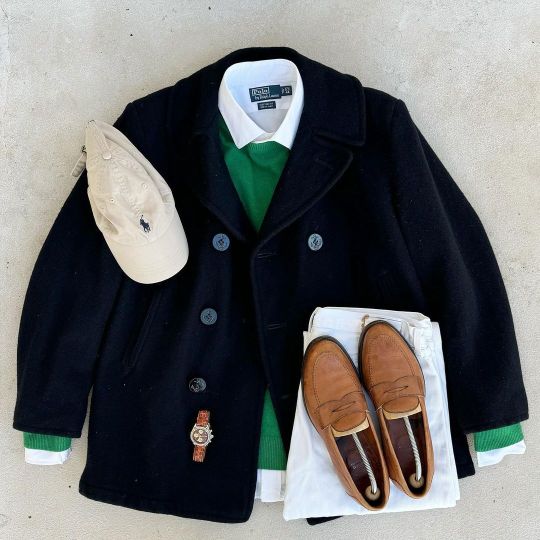

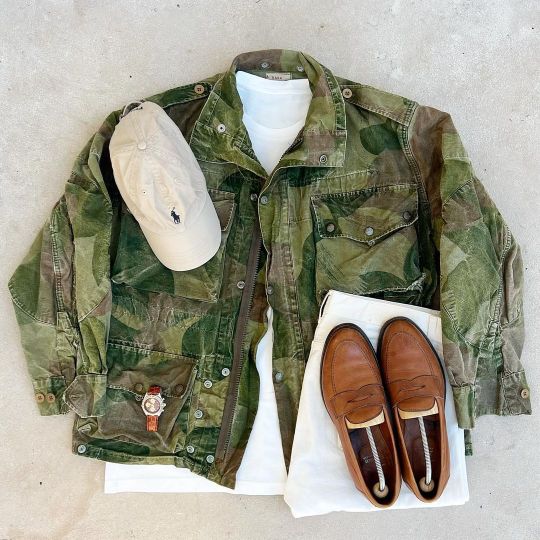
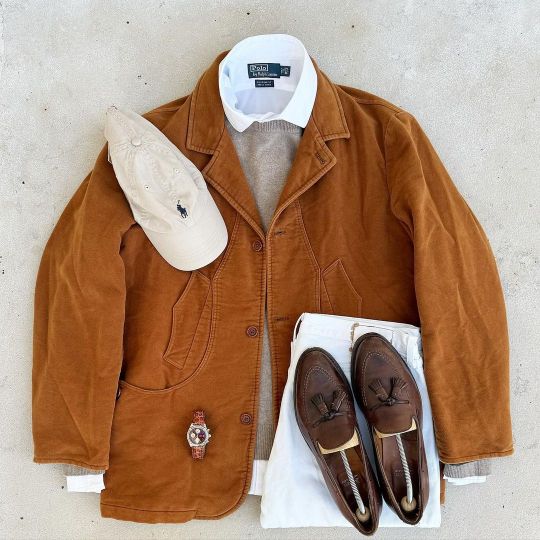
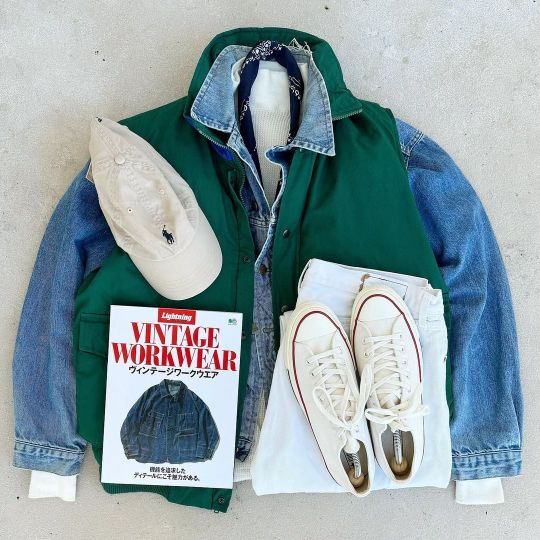
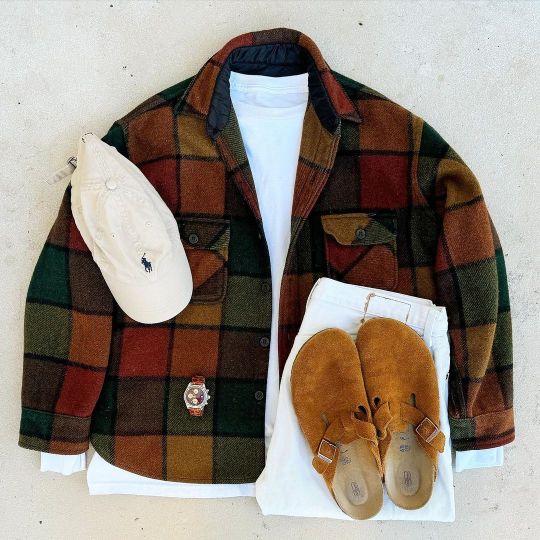
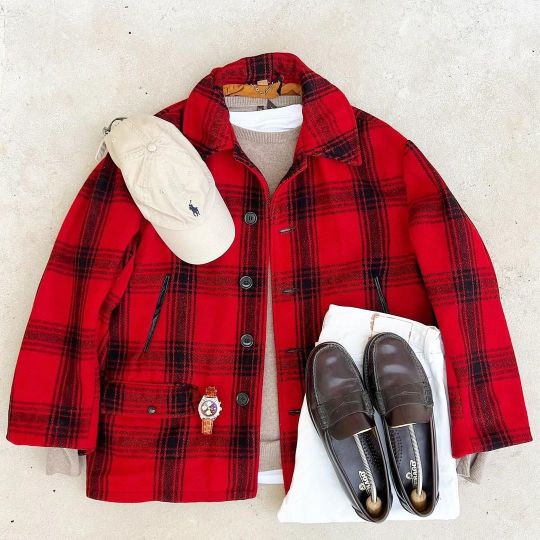
Introducing: Mr. Archive
What better way to kickstart 2024 than with one the most beautifully curated, styled and fair-priced vintage stores out there?
Mr. Archive has been one of my go-to places the last few months, be it for visual inspiration on their instagram profile or the browse some of the most interesting pieces around. To be fair, after 15 years of working in this industry is getting more and more difficult for me to find garments and brands that are truly exciting and fresh. If on top of that we take into account the price point of some of these labels, many of which produce in Portugal with accessible costs, my enthusiasm dims even further.
I’ve always been passionate about the universe of vintage and pre worn garments, but this love has been fueled in recent years by the appearance of highly specialized shops that seem to be perfectly in tune with my personal style. I’ve had the chance to chat with Matteo, the mastermind behind Mr. Archive to learn more about this outstanding project.
BF: I came across Mr. Archive fairly recently and I must say that it definitely hit a soft spot within the range of vintage providers currently on my radar. How long have you been in business? What drove you to create it?
Matteo: I'm passionate about my job, believe I have a somewhat general knowledge of the fashion world, but about 4 years ago, I got fascinated by this industry, even though I already knew it. I come from a family that has always worked in the clothing industry.
BF: For me, your selection is perfectly curated, bringing a mix of military and navy-inspired garments, with a twist of Americana. Is this an extension of your own style and taste, or is it more business-oriented?
Matteo: What I propose is all based on my personal taste; I create outfits on the spot, drawing inspiration from magazines, newspapers, etc., and then I elaborate and create. My mom is an artist, and I think I took inspiration from her.
BF: Vintage has always inspired me ever since I got into fashion roughly 15 years ago. There's just something distinctive about the fabrics and the history behind each garment that you can not replicate with new items. How/where do you source your amazing selection?
Matteo: My pieces come from warehouses worldwide; I'm constantly looking for new things, and that's the wonderful thing about my job! I have strong trust in my suppliers!
BF: With sustainability being the word of order when it comes to fashion, have you noticed an increase in demand for pre-owned garments? Do you think part of the solution can be provided by vintage?
Matteo: Recently, there has been an increase in the purchase of vintage and second-hand clothing items. To be honest, I believe that a few years ago, not many people knew about this world, but now it's expanding and captivating even those who knew little about it.
BF: I noticed you have a small capsule of garments carrying your own label, namely selvedge denim and accessories. What's the story behind those? Can we expect more designs in the future?
Matteo: I won't deny that creating my own clothing line would be a great personal satisfaction, a significant growth. I recently created a small line, "MRARCHIVE," currently composed of jackets, pants, and hats. One day, I'd like to expand, but I still have much to learn and study.
BF: Any tips or advice you wish to leave for those more reluctant to explore the world of previously owned items? It's still somewhat taboo for some people.
For many people, this world is still a taboo; they're still stuck in the thought of "they're used clothes." What I think is that one should see the story and originality behind each piece to appreciate its value, both from a historical and an aesthetic perspective. Sometimes, I compare some clothing items to paintings—they should be framed.
You can find Mr. Archive here.
#Mr. Archive#menswear#men's fashion#vintage#pre-owned#style#fashion#inspiration#beyond fabric#men's style#collection#lookbook#store#shop responsibility#military#navy
280 notes
·
View notes
Text
New Summer Staple? Vintage Stripes!

This short-sleeved button-down from Only & Sons has made several appearances over the last several weeks, from brunch with the boys at New York Pride to fun with friends and family at Disneyland parks over the July 4th weekend.


Only & Sons is a menswear brand that emphasizes denim in their product line and markets primarily to young men, describing their signature style as "a subversive take on contemporary classics."
Only & Sons is part of the BESTSELLER international fashion company, which also owns fashion brands such as LMTD and Vera Moda. They have made sustainability a cornerstone of their marketing and PR strategy, and in June announced their participation in an effort to reduce CO2 emissions in the fashion industry.


The shirt features a slightly open resort collar for a more relaxed appearance and is made of a lightweight viscose blend that will breathe beautifully in the summer. Its textured fabric, fitted cut, and classic stripes evoke the timelessness of vintage style, which is one of the hallmarks of the brand. It comes in several colors, with the one Harvey chose being labeled as "Turquoise/Mountain Spring." It is available in sizes up to Men's XXL (47-inch chest measurement) and retails for €29.99.


Harvey typically styles this shirt with navy slack shorts, a pair of clear-framed, retro style sunglasses, and most recently, a pair of exclusive Club 33 65th anniversary mouse ears.
Affordable Options
All of the elements of this outfit are already pretty affordable, save the sunglasses and (depending on the resell source) the ears. More on both of those accessories coming in future posts!
The shirt, as mentioned above, is €29.99 (roughly $32.52 USD). You can find a pair of nice navy shorts at almost any clothing retailer that sells clothing for men this time of year, but here are some of my favorites:
Old Navy Linen Blend Chinos - These shorts are a linen blend fabric that tends to wear and wash well over time, and come in a soft navy. They have a pleated waist, a 7-inch inseam, and come in sizes up to a 54-inch waist. Originally $32.99, currently marked down to $16.47 on clearance.
Land's End No-Iron Chinos - These shorts are a dark, true navy 100% cotton twill. Note they may shrink slightly on the first wash. They have a stretch waist for added comfort and a 9-inch inseam. Originally $59.95, currently on sale for $29.97.
7 notes
·
View notes
Text
Disney Vogue: Fashion Meets Recycling for the New Frontier
In the latest issue of Disney Vogue, the spotlight shines on the merging of sustainability and high fashion, with a feature exploring how recycled garments and textiles are being reimagined into cutting-edge designs for the modern woman. The theme—"Deconstructed New Age Women of the Frontier"—is both a nod to resilience and a celebration of individuality.
The Vision
Set against a backdrop of innovation, Disney Vogue introduces a wardrobe aesthetic that fuses eco-conscious practices with avant-garde design. Drawing inspiration from the rugged yet pioneering spirit of the "new frontier," these looks embrace asymmetry, frayed edges, and patchwork designs. Each piece is a testament to how sustainability can be stylish, breaking traditional fashion molds.
Key Design Elements
Reclaimed Textiles: Designers repurpose vintage denim, discarded leather, and scrap fabrics to create bold, layered silhouettes. These materials give garments a unique, weathered look that resonates with authenticity.
Fringe Accents: Fringe, a hallmark of frontier style, is modernized through intricate detailing and unexpected placements. Strips of fabric are reimagined as flowing extensions of the garment, adding movement and flair.
Deconstructed Appeal: The designs favor raw hems, visible seams, and patchwork artistry. The effect is deliberate imperfection—pieces that feel alive and evolving.
Highlight Looks
The Upcycled Trench: A sleeveless, waist-cinched coat crafted from old military canvas and linen curtains. It’s paired with hand-dyed fringe boots made from factory offcuts.
Patchwork Maxi Dress: A sweeping dress assembled from floral prints and monochrome scraps, accented with recycled silk sashes. Its asymmetrical neckline adds a touch of modern elegance.
Leather Redux: A statement jacket composed of repurposed leather belts, complete with elongated tassels and copper stud details for an edgy, tactile finish.
The Message Behind the Collection
The feature encapsulates a movement toward thoughtful consumption. By embracing garments with a history, the collection encourages women to rewrite fashion narratives, blending sustainability with personal style. The "new frontier" woman is bold, resourceful, and unafraid to challenge conventions—a trailblazer in every sense.
Designers Leading the Way
Names like Stella McCartney, Gabriela Hearst, and niche eco-design houses collaborated on this editorial, showcasing their commitment to environmentally conscious fashion. Their creations challenge the industry to consider both artistry and responsibility.
Accessories and Final Touches
The accessory line amplifies the theme, with recycled metal jewelry, reworked handbags, and woven hats. Each piece is functional yet striking, further embodying the ethos of the new frontier.
Conclusion
The Disney Vogue feature is not just a fashion statement—it’s a cultural shift. It redefines luxury to include sustainability and creativity, proving that garments with a past can be the future of high fashion.
Mattel x New Reflections Women's Shelter: Empowering Through Real Stories
In an inspiring new collaboration, Mattel has partnered with New Reflections Women’s Shelter to amplify the voices of real women who have overcome immense challenges and emerged as guiding lights for the next generation. The initiative celebrates resilience, strength, and hope by sharing the stories of Ayesha Jones, Elle, and Amy—three remarkable women who exemplify courage and transformation.
The Vision Behind the Collaboration
This partnership seeks to provide young women facing adversity with tangible role models—real-life examples of triumph over hardship. By turning these women's stories into powerful narratives, Mattel hopes to inspire a new generation of leaders, thinkers, and dreamers, emphasizing that no matter where you start, your future is limitless.
Spotlight on Inspirational Women
Ayesha Jones: The Architect of Dreams
Ayesha’s story is one of rebuilding. Once homeless, she found solace and guidance at New Reflections. Through sheer determination, she pursued a career in architecture, and today she designs affordable housing projects for marginalized communities.
Quote: “I design homes because I know what it feels like not to have one. Every blueprint is a chance to create safety and belonging.”
Message: Ayesha symbolizes that with support and determination, women can build not just their futures but the futures of others.
Elle: The Advocate for Justice
Elle, a survivor of domestic violence, found her voice at New Reflections. Now a practicing lawyer specializing in family law, she advocates for women and children in need of legal protection and support.
Quote: “The first time I stood up in court for someone else, I knew my pain had purpose.”
Message: Elle’s story is a beacon for young women seeking justice and self-empowerment, showing that overcoming trauma can lead to profound impact.
Amy: The Heart of the Community
Amy’s journey began with addiction and loss but found hope at New Reflections. Today, she is a community organizer, helping others overcome obstacles and find their strength. She leads workshops on mental health and recovery.
Quote: “Every woman has a light inside her—it just takes the right community to help it shine.”
Message: Amy’s work reminds young women that healing is possible and that giving back can be a powerful step toward self-reclamation.
Mattel’s Role in the Partnership
As part of the collaboration, Mattel will:
Create Inspirational Dolls: A limited-edition series of Barbie dolls inspired by Ayesha, Elle, and Amy. Each doll comes with a storybook detailing their journeys and a QR code linking to resources for young women in need.
Support Programs: A percentage of sales will go directly to funding New Reflections’ shelters and support programs.
Workshops and Mentorships: Mattel will sponsor empowerment workshops at the shelter, featuring guest speakers and skill-building sessions led by women like Ayesha, Elle, and Amy.
Impact Goals
This collaboration is about more than storytelling—it’s about creating lasting change. Mattel and New Reflections aim to:
Inspire Young Women: Provide role models who embody resilience and hope.
Fund Essential Services: Strengthen the shelter’s ability to provide housing, education, and resources.
Spark Conversations: Encourage a broader dialogue about homelessness, domestic violence, and women’s empowerment.
The New Frontier of Hope
By bringing the stories of real women to the forefront, Mattel and New Reflections are redefining what it means to be a role model. This collaboration is a reminder that every woman’s story matters and that, with the right support, anyone can become a beacon of light for others to follow.
5 notes
·
View notes
Text
The Circular Economy: A Path to Sustainability for Large Conglomerates Like Chiripal Group

The adoption of a circular economy by large conglomerates such as the Chiripal Group represents a crucial step toward sustainability. This approach not only redefines business operations but also positively impacts communities and the environment.
Understanding the Circular Economy
The circular economy is designed to be regenerative, aiming to reduce dependency on finite resources. Its principles focus on eliminating waste, keeping products in circulation, and supporting natural systems.
Why Large Corporations Must Lead
Large groups like Chiripal have the reach and resources to champion circular practices. By adopting sustainable strategies, they can inspire widespread industry change and promote eco-conscious practices.
Key Circular Economy Strategies
Product Life Extension: Companies can reduce waste through product repair, refurbishment, and remanufacturing. For instance, Grew, a Chiripal subsidiary, promotes sustainability by ensuring longevity and reusability in solar panels.
Resource Efficiency: By optimizing resources, companies reduce their environmental impact. Nandan Terry and Chiripal Polyfilms focus on efficient design and production. Nandan Terry, for example, reuses 98% of water in production, significantly cutting fresh water demand.
Circular Supply Chains: Shifting to circular supply chains involves recycling and reusing materials, creating a closed-loop system that minimizes waste.
Community Engagement: Engaging local communities in circular practices creates job opportunities and supports social responsibility. Chiripal’s CSR initiatives, such as the "Chiripal Mirchi Green Yodha" campaign, emphasize tree planting and e-waste management. Nandan Denim supports health, education, and environmental projects, while the Happiness Reserves Foundation fosters STEM education through the World STEM and Robotics Olympiad.
Policy Advocacy: Large companies can influence policies supporting circular economy principles by collaborating with governments and stakeholders.
Integrating Social Impact
By combining social initiatives with circular economy practices, companies can address systemic challenges, create jobs, and support community health, thus contributing to a more sustainable and equitable economy.
Conclusion
The circular economy offers strategic advantages, driving sustainability and profitability. For conglomerates like Chiripal, adopting circular practices means taking a lead in climate action and conservation while proving that large-scale industry can align with ecological goals.
This transition to a circular economy not only supports a sustainable future but also establishes a responsible business landscape that benefits both companies and communities.
2 notes
·
View notes
Text
The Evolution of Denim: A Timeless Fashion Staple

Denim, a fabric that has been around for centuries, has evolved from humble workwear to a fashion staple that transcends trends. Its versatility, durability, and timeless appeal have made it a wardrobe essential for people of all ages and genders.
The origins of denim can be traced back to the 18th century in Nîmes, France, where it was first woven as a sturdy, durable fabric for sailors' pants. The fabric's name is derived from "serge de Nîmes," meaning "serge of Nîmes." Denim quickly gained popularity among workers in various industries due to its strength and durability.
In the 19th century, Levi Strauss and Jacob Davis revolutionized denim by adding metal rivets to the pockets of their work pants, creating the iconic jeans that we know and love today. These jeans were designed to withstand the rigors of manual labor and quickly became a staple for miners, cowboys, and other working-class individuals.
Throughout the 20th century, denim continued to evolve and adapt to changing fashion trends. In the 1950s, jeans became a symbol of rebellion and youth culture, with iconic figures like James Dean and Marlon Brando popularizing the look. In the 1960s and 1970s, denim was embraced by the hippie movement, with flared jeans and patchwork denim jackets becoming popular styles.
In recent decades, denim has experienced a resurgence in popularity, with designers and fashion brands experimenting with new silhouettes, washes, and treatments. From distressed jeans to high-waisted mom jeans, there is a denim style to suit every taste and occasion.
Denim's versatility has made it a staple in both casual and formal wardrobes. Jeans can be paired with a t-shirt and sneakers for a relaxed look or dressed up with a blazer and heels for a more sophisticated outfit. Denim jackets and denim shirts are also popular choices, adding a touch of cool to any ensemble.
In addition to its fashion appeal, denim has also become a symbol of sustainability and ethical consumption. Many denim brands are now committed to using sustainable materials, reducing their environmental impact, and ensuring fair labor practices.
As denim continues to evolve, one thing remains constant: its timeless appeal and versatility. Whether you're a denim enthusiast or simply looking for a reliable wardrobe staple, there's no denying the enduring charm of this iconic fabric.
4 notes
·
View notes
Text
Kuzgunlar Textile: Denim Disruption
Istanbul, Türkiye — 06.27.2024— Kuzgunlar Textile, the powerhouse behind Turkey’s most innovative denim, is shaking up the industry once again. While details remain under wraps, the company has hinted at groundbreaking advancements that promise to revolutionize the way we think about jeans.
“We’ve always been passionate about pushing the boundaries of denim,” says Mert , CEO of Kuzgunlar Textile. “This latest innovation is a testament to our unwavering commitment to quality, comfort, and sustainability.”
A Legacy of Denim Excellence
For over 60 years, Kuzgunlar Textile has been a leader in Turkish denim production. Their dedication to using premium materials and cutting-edge technology has resulted in a loyal following among fashionistas and everyday wearers alike.
What to Expect
While Kuzgunlar Textile remains tight-lipped about the specifics of their upcoming innovation, speculation is running rampant within the fashion industry. Could it be a new fabric with unparalleled comfort and stretch? A revolutionary dyeing process that reduces environmental impact? Or perhaps a technological marvel that integrates functionality directly into the denim itself?
The Future of Fashion is Denim-Clad
One thing is certain: Kuzgunlar Textile is poised to disrupt the denim landscape once more. With their commitment to innovation and a reputation for excellence, fashion enthusiasts around the world eagerly await the unveiling of this groundbreaking development.
Stay Tuned
For more information about Kuzgunlar Textile and their upcoming innovation, please visit their website at https://www.kuzgunlar.com.tr/ or follow them on social media at kuzgunlartextile.
more: https://medium.com/@manufacturersdenim/kuzgunlar-textile-denim-disruption-8028e6651124
2 notes
·
View notes
Text
The Circular Economy: Gen Z and Millennials; Approach to Sustainable Fashion
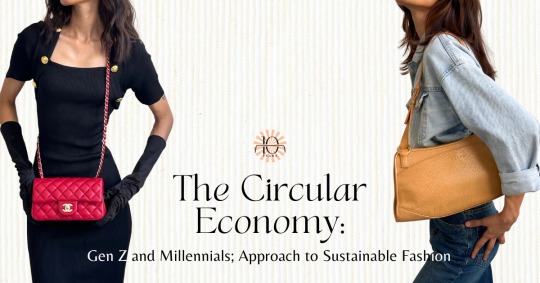
Gen Z and Millennials' Perspective on Sustainable Fashion in the Circular Economy
Have you ever wondered how Gen Z and Millennials transform the fashion industry via their commitment to sustainability and the circular economy, making eco-friendly and high end designer fashion the new standard? Imagine a future where fashion is more than simply looking nice; it's also about doing good for the environment. The Millennial and Generation Z are creating this reality. Finding rare artefacts that no one else has is also exhilarating! These generations are driving a change in the fashion business by embracing a circular economy through pre-loved luxury designer brands that prioritizes sustainability and ethics. Let's examine their impact and how it will affect fashion in the future.
What is a Circular Economy?
So, what exactly constitutes the circular economy? In contrast to the conventional 'take, make, dispose' approach, the circular economy prioritizes prolonging the life of items. It is a method designed to eliminate waste while making the best use of resources. Consider this: instead of tossing away an old sweater, you find a way to give it new life, whether by repurposing it or recycling the materials.
Why Generation Z and Millennials Care?
Due to their shared values, Patagonia, Reformation, and Everlane have grown in popularity. They grew up in a world where the effects of climate change and environmental degradation are impossible to ignore. For them, sustainability is more than a slogan; it is a way of life.
Sustainable Consumption Patterns: Thrifting and Secondhand Shopping
Thrifting is no longer deemed uncool. Shopping at thrift stores and online second-hand platforms such as Depop, ThredUp, and Poshmark is now not only popular but also considered a smart and trendy option. By purchasing used items, these astute shoppers lessen the need for new things, reducing waste and conserving resources. Finding rare artefacts that no one else has is also exhilarating!
Upcycling and DIY Fashion
Another popular trend is upcycling, which involves transforming old clothing into something fresh and wonderful. DIY fashion is all about creativity and sustainability, whether upcycling an old pair of jeans into a stylish denim skirt or embellishing a simple blazer with patches and embroidery or simply investing in a discounted handbag. It's a fun way to update your wardrobe without purchasing new clothes, and it's an excellent example of the circular economy in action.
Supporting ethical brands
Gen Z and Millennials are putting their money where their mouth is by promoting brands that value sustainability and ethical practices by adopting pre-owned luxury fashion brands. They are searching for companies that are open about their supply chains and dedicated to fair labour and environmental stewardship.
Eco-friendly materials.
These generations also value environmentally friendly materials. They choose apparel made of organic cotton, recycled polyester, and new textiles such as Tencel, derived from sustainably generated wood pulp. These materials are more comfortable, long-lasting, and ecologically friendly. Apart from this, investing in a designer handbag is also a fruitful idea. Indians are becoming more well-known for their pre-owned handbag collections, which include pre-owned Gucci handbags.
Transparency and Accountability
Young consumers want to know where their clothes come from, who made them, and under what conditions. Brands that provide this information and take responsibility for their environmental and social impact are building trust and loyalty among these buyers. It’s about more than just the end product; it’s about the entire process from start to finish.
Social media is a valuable tool in the fight for sustainable fashion. Generation Z and Millennials use social media sites such as Instagram, TikTok, and Twitter to enhance environmental awareness and encourage sustainable fashion choices. Influencers and campaigners are discussing how to shop sustainably, the value of ethical production, and the environmental impact of rapid fashion.
Social Media Influence
Social media has made it easier than ever to create awareness about sustainable fashion. Influencers that promote eco-friendly practices and companies have a large following and can greatly influence customer behaviour. They encourage others to adopt greener choices by showing sustainable attire, thrift store finds, and upcycling projects.
Online Community and Movements
Online communities and movements also have enormous influence. Campaigns such as #SecondHandSeptember and #BuyNothingNew encourage individuals to reconsider their purchasing habits and embrace more sustainable alternatives.
The Circular Economy: Sustainable Fashion from the Viewpoint of Generation Z and Millennials
If you've been following the fashion world recently, you've probably seen a huge shift in how people think about their apparel. Now the same goes for the designer and branded handbags as well. The days of disposable fashion and transient fads are over; instead, a new movement is rising, led mostly by Generation Z and Millennials and that is pre-owned luxury handbags. Take for example, The Bottega Venetta clutch price in India has seen a huge shift and millennials are approaching it to get discounted designer handbags. This movement revolves around the circular economy, in which sustainability and longevity are prioritized over constant consumption. But what is the circular economy, and how are younger generations paving the way? Look at how Generation Z and Millennials are transforming the fashion world through their devotion to sustainability. The circular economy emphasizes the design of clothes and handbags that can be reused, repaired, and recycled, reducing environmental impact.
The Role of Generation Z and Millennials
Generation Z and Millennials have grown up in an increasingly environmentally conscious world, and their shopping patterns reflect this. They prefer brands that exhibit a commitment to sustainability, and they are more willing to support businesses that provide information about their manufacturing procedures and materials.
Thrift Shopping and Secondhand Fashion
One of the most notable trends among these generations is the increase in thrift shopping and second-hand clothing. This trend not only lowers the cost of fashion but also extends clothing life cycles, decreasing waste. It's a win-win situation for customers who want to find unique things while also reducing the environmental impact of the fast fashion industry.
The Appeal of Vintage
Vintage clothes have a distinct attraction for Generation Z and Millennials, who see it as a means to express themselves while simultaneously supporting sustainability. Wearing antique clothing is a chance to distinguish yourself in a world filled with mass-produced goods. Furthermore, the quality and craftsmanship of vintage clothes frequently outperform modern fast fashion, making it a more sustainable option in the long run.
Upcycling and DIY Fashion
Upcycling, or creatively repurposing old materials to make new things, is a trendy trend among younger generations. This DIY approach allows people to personalize their clothing while eliminating waste. Upcycling stimulates creativity and sustainability at the same time, whether it's converting old trousers into chic coats or turning discarded materials into unique accessories.
Ethical and sustainable brands.
The need for ethical and environmentally friendly products is also rising thanks to Generation Z and Millennials. Companies like Patagonia, Everlane, and Reformation are gaining popularity due to their dedication to fair labour methods and environmentally sustainable products. These firms are open about their supply chains and work to reduce their environmental effect, which aligns with the ideals of younger consumers.
The Future Of Fashion
So, what does the fashion industry's future look like? If Gen Z and Millennials had their way, sustainability would be the norm rather than the exception. Here are a few ways they are influencing the future of fashion.
Innovation and Technology.
More innovation and technology are expected in pre-owned luxury fashion brands, ranging from biodegradable materials to computerized closets. These generations are technologically adept and open to new ideas, which drives developments in fashion sustainability. For example, firms are producing fabrics that degrade harmlessly after use, decreasing the impact on landfills.
Circular Fashion Business Models
We're also witnessing an increase in circular fashion business models. This includes rental companies like Borrow the Runway, which allows you to borrow high-end apparel for a fraction of the price, as well as resale platforms that make it easy to buy and sell used items.
Education and Policy Change
Education and policy reform are also important. Young people are campaigning for improved sustainability teaching in schools and universities, as well as legislation that holds businesses accountable for their environmental impact. This could range from stricter waste and emission laws to incentives for sustainable materials.
Thrift Shopping and Secondhand Fashion
One of the most notable trends among these generations is the increase in thrift shopping and second-hand clothing. Thrift shopping benefits the environment by reducing the demand for new apparel production.
Affordability: Thrift stores frequently sell pre-loved luxury designer brands with high-quality things at a fraction of the original price.
Unusual Finds: Finding vintage or one-of-a-kind items that are not sold in traditional retail outlets.
Supporting Charities: Many thrift stores are operated by nonprofit organizations, so your purchase usually benefits a good cause.
Conclusion The pre-owned luxury designer bags industry is flourishing at the same pace. Gen Z and Millennials are at the forefront of this movement, leveraging their purchasing power and influence to force change in the fashion industry. They demonstrate that fashion can be stylish and sustainable by thrifting, upcycling, supporting ethical products, and utilizing social networking. Even in India, millennials are keen on buying preloved handbags including Gucci, Prada and second hand Balenciaga bags. There is a huge popularity for bags online where you can easily buy on its website. Chanel, Bottega Veneta or Burberry bags online are easily accessible. As these generations continue to push for environmental protection and demand transparency and accountability from brands, the future of fashion appears greener and brighter than ever. Movements foster a sense of community and collaborative action, demonstrating that modest improvements may add a significant impact.
#luxury designer handbags#pre loved designer bags#luxury handbags in india#chanel bags#pre owned luxury#pre owned luxury bags#gucci bags in india#branded handbags online#gucci men purse#high end designer fashion#pre-loved luxury designer brands#Millennial and Generation Z#discounted handbag#pre-owned luxury fashion brands#pre-owned handbag collections#pre-owned Gucci handbags#designer and branded handbags#pre-owned luxury handbags#The Bottega Venetta clutch price in India#discounted designer handbags#sell pre-loved luxury designer brands#high-quality things at a fraction#pre-owned luxury designer bags#buying preloved handbags#second hand Balenciaga bags#Burberry bags online
2 notes
·
View notes
Text
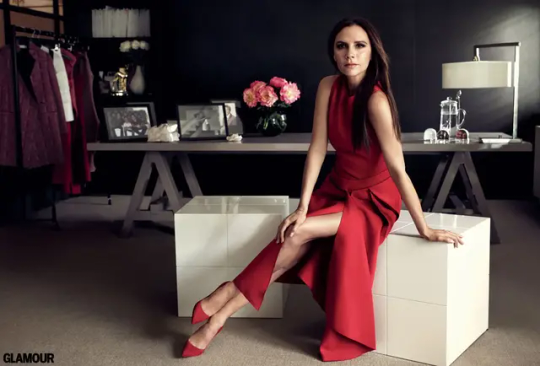
Fashion Brands that stem from the Entertainment Industry: Victoria Beckham
British pop sensation, Victoria Beckham, first came to the scene in the 1990s as “Posh Spice” in the girl group, Spice Girls. She became synonymous with the “posh” style with her sleek and sophisticated fashion looks. After the group took a step back from music in the early 2000s, she began to further transition into the fashion industry.
In 2006, Beckham launched a denim line called dVb. She later expanded the brand to include clothing, accessories, and eyewear. A few years later in 2008, she launched the self-named brand she is known for today, Victoria Beckham. The brand debuted with a line of elegant dresses that encapsulated Victoria’s classic style. The garments were feminine, modern, and well-tailored. She aimed to create a brand that withstands the test of time with elegant, timeless pieces. She emphasizes tailoring, luxury fabrics, and sleek silhouettes in her collections. Victoria Beckham has spoken of a commitment to sustainability in her brand's operations. She has implemented eco-friendly practices, such as using sustainable materials and reducing waste in production processes, to minimize the environmental impact of her label.
The Victoria Beckham brand has expanded greatly since its origin, having flagship stores in London and Hong Kong. Outside of the official stores, the brand can be found and purchased online. Her brand has received widespread acclaim in the fashion industry, even earning her Designer Brand of the Year at the British Fashion Awards in 2014.
The Victoria Beckham brand has elevated modern luxury with its sophisticated designs, impeccable craftsmanship, and commitment to empowering women through fashion. Her journey from girl-group pop star to esteemed fashion designer reflects her evolution as a multifaceted creative force in the entertainment industry.
-Siobhan

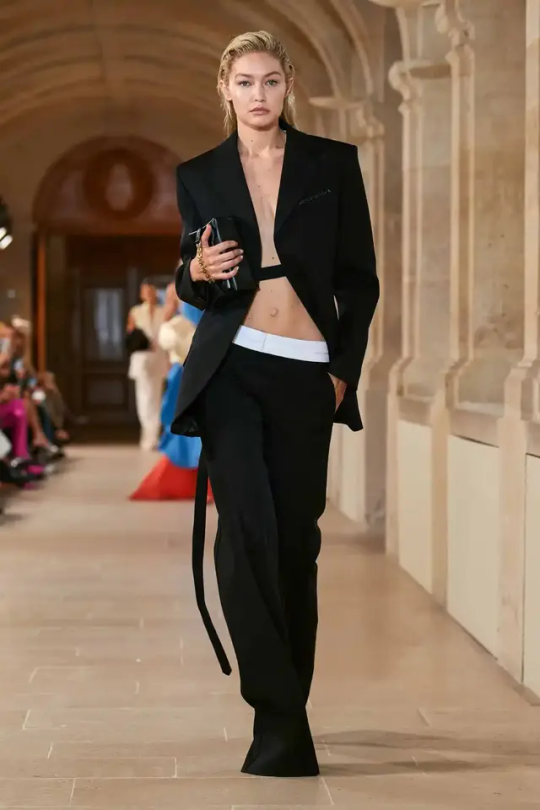

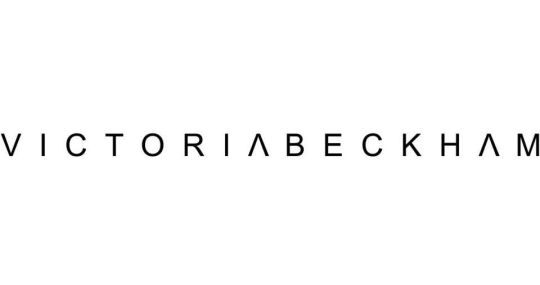
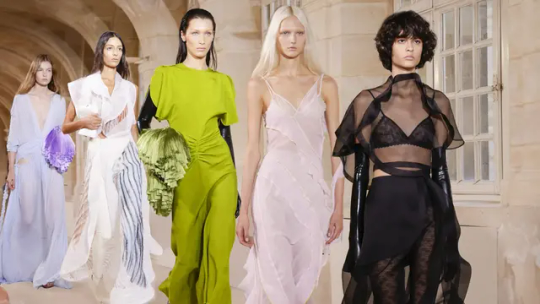
3 notes
·
View notes
Text
Reflection on Renée Neblett Talk
Reflections on “Building Kokrobritey”

Renée Neblett’s talk on her work and mission with the Kokrobritey Institute was deeply moving. As someone who is passionate about sustainability and its connection with the arts, I knew I had to take advantage of the opportunity to learn about eco-conscious art and design initiatives. I am a current fashion design student at MassArt, entering my final year. My approach to my studies has been hyper-focused on sustainable alternatives to the negative global impact of the fashion industry. I know that Ghana has been overwhelmingly impacted by imported second hand garments and textile waste, so I was curious to learn what the Kokrobitey Institute is doing to alleviate this issue.


The talk was eye-opening. Ms. Neblett has built an innovative educational program that trains community members, amplifies their creativity, lifts up local traditions, cherishes ancestral knowledge, and prepares the next generation of Ghanaian creators and changemakers. Kokrobitey takes trash out of the streets and landfills and transforms it into furniture, clothing, jewelry, home decor, and more. Advertisement banners become satchels and pouches, glass bottles become earrings and construction supplements, denim jeans become tapestries and furniture upholstery, and much more. With a sewing studio, a glass kiln, a woodworking shop, a medicinal and nutritional garden, all in a self-constructed building, Kokrobitey is an innovative example of holistic environmental sustainability, such that we should all strive to achieve within our own communities.



I was deeply inspired by this talk and the discussion afterwards. I look forward to learning much more about the Kokrobritey Institute and how I may someday be able to transform my vision for a cleaner, more just fashion industry into a broader positive movement to protect the environment and the culture that kept us near it.
— Heily Rivas, Fashion Design ‘24 – CACP Radical Welcomer/Office Assistant
Please check out the links below to learn about Renée and the African Renaissance. Other videos and information are available by visiting the Kokrobitey Institute website.African Renaissance. Other
.
https://twyg.co.za/renee-neblett-on-why-we-need-an-african-renaissance-in-fashion/#:~:text=Social%20activist%20and%20founder%20of,Awards%20on%2017%20November%202022.
#sparctheartmobile#CultivatingRelationships#ArtInPublicLife#ArtAndDesign#IgnitingArtAndDesign#Collaboration#KokrobiteyInstitute#RenéeNeblett
3 notes
·
View notes
Video
tumblr
towwn: eco-friendly denim lines we love 👖🌎♻️ there are lots of benefits to eco denim—from reduced water waste and fewer harmful chemicals, to the use of sustainable dyes, fair labor practices and more high quality organic and recycled cotton. next time you’re in the market for new denim, consider one of these 4 brands doing better for both people + planet.* 👖@eticadenim prioritizes low-impact chemicals derived from plants + minerals in its production process. safe, alternative lightening agents are used to create multiple washes, and the denim is washed via e-flow technology—which saves 1000+ gallons of water in every load. overall, ética tracks+ reduces water usage by 90%, energy consumption by 63% & chemicals by 70% compared to industry standards. 👖@boyishjeans is committed to sustainable fabrics, such as tencel™ lyocell, organic cotton, recycled cotton + more grs-recycled fabrics. made with fewer chemicals, the brand uses natural plant-based dyes + reduced dystar indigo, reducing the toxic impact of synthetics + sulfates. boyish is vigilant about water safety, recycling h20 to keep chemicals out of local fresh-water sources. 👖@outerknown supports regenerative farming practices and chooses earth-friendly fibers with good circularity potential, like organic + recycled cotton, hemp + responsible wool. it works with 2 b-corp certified suppliers and runs 8 production facilities on renewable energy. workers’ well being is prioritized via high labor standards, extended health insurance, scholarships, housing support + more. it also launched outerworn, a resale platform for pre-loved styles, to keep clothes out of landfills. 👖@shopredone is best known for its innovative approach to upcycling vintage @levis, which gives them a new lease on life and reduces waste. utilizing existing fabrics, the brand saves on cotton production + water-intensive dyeing techniques. this approach helps minimize environmental impact while offering customers a unique pair of upcycled jeans.. (*as always, the most eco-friendly option is to shop secondhand whenever possible. ✌️)
18 notes
·
View notes
Photo


fashionimpactfund: Ciara, the Grammy Award winning music icon, entrepreneur and philanthropist, joined our United Nations Conscious Fashion and Lifestyle Network annual meeting to discuss how her B Corp fashion brand ‘The House of LR&C’ has built sustainability, giving back, and gender equity in from the beginning. The House of LR&C is a network member with a priority commitment to SDG 10. Ciara was joined by Kaley Roshitsh, Sustainability Editor, Women's Wear Daily; Therese Hayes, Chief Operating Officer and Chief Sustainability Officer, The House of LR&C and Janelle Shiplett, Chief Marketing Officer and Chief Commercial Officer, The,House of LR&C. The meeting, co-convened by the United Nations Office for Partnerships and the Fashion Impact Fund with supporting partners Calik Denim, Lenzing, Renewcell and The LYCRA Company, brought together more than 150 media, industry stakeholders, and United Nations representatives to highlight actions, solutions, and progress from the fashion and lifestyle sectors to advance knowledge and strengthen engagement to deliver the Sustainable Development Goals.
#ciara#tumblr#celebs#celebrities#makeup#fashion#hair#girl#lips#glamour#portrait#russell wilson#teamciara#csquad#celebrity#blackgirlmagic#blackgirlsrock#beauty#House of LR&C#SDGfashion#fashion impact fund#2023
3 notes
·
View notes
Text
Rise of Sustainable Manufacturers in the USA

Introduction
Denim has been a staple fabric in American fashion for decades, worn by people from all walks of life. However, the traditional methods used to produce denim have had a significant impact on the environment. In recent years, there has been a growing trend toward sustainability in the fashion industry, and denim manufacturers are no exception. Sustainable denim production methods have been gaining popularity in the USA as a way to reduce the environmental footprint of denim production. In this blog, we will explore the rise of sustainable clothing manufacturers in the USA, including the benefits of sustainable denim, the challenges that manufacturers face, and the trends driving the demand for eco-friendly denim. We will also look at some of the leading sustainable denim brands and their efforts to create denim that is both fashionable and environmentally responsible.
Rise Of Apparel Manufacturers in the US
The rise of apparel manufacturers in USA can be attributed to several factors, including the increasing demand for sustainable and eco-friendly fashion, the rise of e-commerce, and the popularity of athleisure wear. Both sportswear and denim manufacturers have played a significant role in this trend.
Sportswear manufacturers have been at the forefront of designing and producing athletic apparel that meets the needs and wants of consumers. In recent years, they have also placed a greater emphasis on sustainability, using eco-friendly materials and production methods to reduce their environmental impact. This has led to the rise of sustainable sportswear brands in the US, such as Patagonia and Adidas, which have gained a loyal following among consumers who prioritize sustainability in their purchasing decisions.
Similarly, denim manufacturers have also been adapting to the growing demand for sustainable fashion. Traditional denim production can be highly resource-intensive, but sustainable denim production methods have emerged as a cost-effective and eco-friendly alternative. Denim manufacturers have been adopting waterless or low-water production methods and using organic cotton and recycled materials in their products. The rise of sustainable denim brands, such as Levi’s and Nudie Jeans, reflects the shift towards eco-friendly fashion in the US.
The popularity of e-commerce has also contributed to the rise of apparel manufacturers in the US. Online platforms have made it easier for smaller, independent brands to reach a wider audience and compete with larger, established brands. This has led to a greater diversity of fashion options for consumers and has helped to drive innovation in the industry.
Finally, the rise of athleisure wear has also contributed to the growth of apparel manufacturers in the US. Athleisure wear has become increasingly popular in recent years, with consumers seeking comfortable and functional clothing that can be worn both for exercise and everyday wear. This trend has led to the emergence of new sportswear brands and has also influenced the designs of traditional fashion brands.
In conclusion, the rise of apparel manufacturers in the US is a complex trend that reflects changing consumer preferences and industry innovations. Both sportswear and denim manufacturers have played a significant role in this trend by adapting to the growing demand for sustainable and eco-friendly fashion, as well as by embracing e-commerce and responding to the popularity of athleisure wear.
The Rise of Sustainable Denim
The rise of sustainable denim is a growing trend. It has become more popular in the last few years, as people are becoming more aware of how their clothing impacts the environment. Sustainable denim is made from recycled materials and uses less chemicals, water, and energy during its production process.
Sustainable jeans are created using more sustainable processes that don’t harm the environment or contribute to climate change by releasing greenhouse gases into our atmosphere. There are many ways you can make sure your jeans are environmentally friendly: buying organic cotton; choosing hemp or bamboo fibers over pesticides; using less dye (which requires lots of chemicals) than conventional dyes do; avoiding leather patches made from real animal skins; avoiding zippers made out of plastic since they take hundreds of years before breaking down completely!
How Sportswear Manufacturers Are Lead Trendsetters
Sportswear manufacturers are often considered trendsetters because they are at the forefront of designing and creating new athletic apparel that meets the needs and wants of athletes and consumers alike. These manufacturers invest heavily in research and development to create high-quality, functional, and stylish sportswear that can improve performance, enhance comfort, and meet the latest fashion trends.
One of the ways that sportswear manufacturers can lead trends is by working closely with professional athletes and teams. By understanding the specific needs of athletes, manufacturers can design products that are tailored to their unique requirements, whether it be for performance or recovery. This close collaboration allows them to create innovative designs and materials that are tested and proven by some of the world’s top athletes, which then leads to greater demand from consumers.
Another way that sportswear manufacturers set trends is through their marketing and advertising campaigns. These companies often employ high-profile athletes and celebrities to promote their products, and they leverage social media and other platforms to showcase their latest designs and collections. This helps to build hype and anticipation around new product releases, and it can also influence the fashion trends of consumers who want to emulate the styles of their favorite athletes and celebrities.
In addition, sportswear manufacturers also have the advantage of being able to quickly adapt to changing trends and consumer preferences. They have the resources and expertise to pivot their designs and materials to meet the demands of the market, whether it be for sustainable and eco-friendly materials, or new technologies such as smart fabrics that can monitor and enhance athletic performance.
Overall, sportswear manufacturers are leaders in the fashion industry because they are constantly pushing the boundaries of what is possible with athletic apparel, and they have a keen understanding of the needs and wants of athletes and consumers. Their innovative designs and marketing strategies set the trends for the latest styles and technologies in sportswear, and they continue to drive the industry forward with their creativity and ingenuity.
Sustainable Denim Is a Cost-Effective Option for Apparel Manufacturers
Sustainable denim is becoming a popular choice for American clothing manufacturers because it offers a cost-effective option that benefits both the environment and consumers. Traditional denim production can have a significant impact on the environment due to the large amounts of water, energy, and chemicals required in the process. Sustainable denim, on the other hand, utilizes eco-friendly production methods that reduce water consumption and chemical usage, resulting in a lower environmental footprint.
In addition to the environmental benefits, sustainable denim can also be cost-effective for manufacturers. While the initial investment in sustainable production methods may be higher, the long-term savings can be significant. For example, waterless or low-water production methods can save up to 95% of the water typically used in denim production, which can result in significant cost savings on water bills. Sustainable denim production can also reduce the need for expensive chemical treatments and can even extend the life of the denim, reducing the need for frequent replacements and saving on production costs.
Moreover, sustainable denim is increasingly in demand by consumers who are becoming more environmentally conscious and are willing to pay a premium for sustainable products. This demand can lead to higher profit margins for manufacturers who produce sustainable denim. By offering eco-friendly options, manufacturers can also appeal to a growing segment of consumers who prioritize sustainability when making purchasing decisions.
Overall, sustainable denim can be a cost-effective option for apparel manufacturers. By reducing their environmental impact, manufacturers can save on production costs and appeal to environmentally conscious consumers, which can lead to increased sales and profits. As sustainability becomes increasingly important in the fashion industry, manufacturers who prioritize eco-friendly production methods will likely have a competitive advantage.
What is Sustainable Denim?
Sustainable denim is a fabric that’s made from recycled cotton. The process of recycling cotton uses less water, energy, and chemicals than conventional methods. It also results in a more environmentally friendly product for apparel manufacturers to use and consumers to buy.
Sustainable denim is more durable than conventional denim because it doesn’t have any toxic dyes or finishes applied to it during manufacturing — it’s just pure white cotton! This means you can wear your favorite pair of jeans without worrying about how much they’ll fade over time (and if you want them faded out even quicker, just wash them with dark clothing). Plus, the less chemical-laden dye that goes into making sustainable clothes means they won’t rub off on other items in your closet as conventional dyes do!
Finally — and perhaps most importantly — sustainable clothing feels better against your skin than traditional fabrics like polyester blends do because there aren’t any harsh chemicals present during production processes that might irritate sensitive areas such as armpits/groins/etc.
Rising Demand for Sustainable Denim
If you’re like most people, you probably don’t think about where your clothes come from and what they’re made of. But if you do, chances are good that sustainability is at least part of the reason for your purchase decision.
Sustainable apparel is growing in popularity — and for good reason! From its use of organic materials to its emphasis on manufacturing processes that minimize waste and environmental impact, sustainable apparel helps us all feel better about ourselves while reducing our carbon footprint. And it’s not just an abstract concept: The demand for sustainable clothing has risen dramatically in recent years.
Why Is Sustainable Denim Important?
Sustainable denim is an important movement for a variety of reasons.
First, it helps reduce the impact of denim on our environment. Second, it helps reduce the impact of denim on human health by reducing harmful chemicals and toxins in clothing production. Third, sustainable fashion increases the quality of life for workers in supply chains by providing fair wages and safe working conditions; this also benefits consumers who buy sustainable products because they’re helping create jobs that improve lives instead of destroying them through exploitation or abuse.
The Future of Sustainable Denim
As the demand for sustainable clothing continues to grow, so will the industry’s ability to meet it. If you look at a few key indicators of sustainability in denim over time (e.g., organic cotton production), they’ve already been on an upward trajectory since 2010 and show no signs of slowing down. This means that as we move forward into 2019 and beyond, we can expect to see more and more brands offering sustainable options at different price points — and even some mainstream retailers getting in on the action too!
The Demand for Sustainable Apparel Is Growing
The demand for sustainable apparel is growing. Consumers are becoming more aware of the effects of their purchases on the environment and are looking for ways to make better choices. Sustainable clothing can help them do this, but there’s still a lot of confusion about what “sustainable” means and how it affects the quality of the product.
Sustainable apparel is an important trendsetter in the fashion industry because it helps consumers understand that they have more options than simply buying new clothes every season or two. It also allows manufacturers to create innovative products by using recycled materials in creative ways that don’t compromise style or performance — and can even improve both!
Conclusion
The future of sustainable denim is bright and the demand for sustainable apparel is growing. Apparel manufacturers are finding new ways to create denim that’s both environmentally friendly and stylish.
#american clothing manufacturers#denim manufacturers in usa#apparel manufacturers#apparel manufacturers in usa
4 notes
·
View notes
Text
Transparently Chic: Embrace the Jelly Bag Craze and Make a Fashion Statement
In the world of fashion, trends come and go, but there's one style that has captured the attention of fashionistas everywhere: the jelly bag. These transparent accessories have taken the fashion industry by storm, offering a unique and stylish way to carry your essentials. With their vibrant colors and versatility, jelly bags from Carmen Sol have become a must-have item for women looking to make a fashion statement.
Jelly bags are not your average handbags. Made from high-quality, durable PVC material, these bags offer a modern twist on the classic tote or crossbody design. The transparent nature of jelly bags adds a playful and whimsical touch to any outfit, allowing you to showcase your personal style with a hint of transparency.
Carmen Sol, a renowned brand in the fashion industry, has embraced the jelly bag craze and has become a leader in creating stylish and functional jelly bags for women. Their collection features a wide range of designs, from classic totes to trendy crossbody bags, all crafted with meticulous attention to detail.
One of the key advantages of Carmen Sol's jelly bags is their versatility. These bags are available in a spectrum of vibrant colors, allowing you to find the perfect match for any outfit or occasion. Whether you're heading to the beach, attending a summer festival, or simply running errands around town, a jelly bag from Carmen Sol will add a touch of chicness to your ensemble.
What sets Carmen Sol's jelly bags apart is not just their style, but also their functionality. Each bag is carefully designed to provide ample space for your belongings, with interior compartments and pockets to keep you organized. The durable PVC material is water-resistant, making these bags ideal for beach trips or rainy days. Additionally, the adjustable straps and handles ensure a comfortable fit, allowing you to carry your essentials with ease.
Jelly bags have become more than just a trendy fashion accessory; they have also become a symbol of sustainability. Carmen Sol is committed to eco-conscious practices, using non-toxic and recyclable materials in the production of their bags. By choosing a jelly bag from Carmen Sol, you're not only making a fashion statement but also contributing to a greener future.
These stylish and eco-friendly women jelly bags have captured the hearts of fashion-forward women worldwide. From fashion bloggers to celebrities, the jelly bag craze shows no signs of slowing down. Embrace the trend and let your personal style shine through with a Carmen Sol jelly bag.
Whether you opt for a classic clear jelly tote or a bold colored crossbody, these accessories are sure to turn heads wherever you go. Pair them with a breezy summer dress, a casual denim ensemble, or even a sleek evening outfit; the possibilities are endless.
In conclusion, the jelly bag craze has taken the fashion world by storm, and Carmen Sol has established itself as a go-to brand for women looking to embrace this trend. Their stylish, versatile, and eco-friendly jelly beach bags offer the perfect combination of fashion and functionality. So, why wait? Embrace the jelly bag craze today and make a fashion statement that is transparently chic.

2 notes
·
View notes
Text
What is the “Trend” ?

What is the “Trend” ? In the age of technology and social media, the term “trending” has become a popular term to describe something that is becoming popular or receiving a lot of attention. Social media platforms such as Twitter, Facebook, Instagram, TikTok, and YouTube all have a “trending” feature, allowing users to see what is popular and being talked about on their platform. The most popular keywords on these platforms are often displayed on the homepage or search results page.
Why is “trending” important? Understanding what is popular and being talked about can help marketers, businesses, those working in the media industry, and even individual users understand the trends and interests of users, thereby creating relevant content that attracts the attention of customers or followers.
Additionally, “trending” helps users stay up-to-date with the latest news, events, or trends in their community. This can help users make more informed decisions and interact with other users on social media.
In today’s era, trends in fashion choices and shopping habits among young people are rapidly changing. With the development of technology and social media, young people have easy access to the latest products, fashion styles, and unique collections. This article will introduce some popular shopping and fashion trends among young people today.
Sustainable fashion: The trend of sustainable fashion is becoming increasingly popular. Young people are now interested in products made from environmentally-friendly materials, durable designs, and recyclable. In addition, fashion brands are also focusing on producing environmentally-friendly products and ensuring good working conditions for workers.
Vintage fashion: Fashion styles from the 80s and 90s are making a comeback and are loved by young people. Denim material, long skirts, leather jackets, plain t-shirts… are popular vintage fashion styles. What’s special is that young people often seek unique vintage products to express their individual style.
Streetwear fashion: Streetwear fashion is becoming an undeniable trend among young people. Products such as sports shoes, jogger pants, t-shirts with images… are becoming essential items in young people’s wardrobes. Famous streetwear fashion brands like Supreme, Off-White, and Yeezy are very popular.
Online shopping: With the development of technology, online shopping is becoming a popular trend among young people. Instead of going to fashion stores to shop, young people now often choose to shop online. This makes it easier for them to access a wide range of products and compare prices and quality.
2 notes
·
View notes
Text
Fashion on a Budget: Thrift Store Hauls and DIY Clothing Ideas
Fashion is often associated with high price tags, making it difficult for many to keep up with the latest trends. However, there are numerous ways to stay stylish without breaking the bank. Thrift store shopping and DIY clothing projects are great options for those looking to save money while still looking fabulous.
Thrift stores offer a treasure trove of hidden gems, from vintage designer pieces to unique finds that can be tailored to fit your style. DIY projects allow you to create unique custom pieces that reflect your individuality. In this blog, we'll explore the world of budget fashion, sharing our favorite thrift store hauls and DIY ideas to help you look your best without spending a fortune.
Thrift Store Styles
Classic Designer Haul
Classic designer hauls from thrift stores are a fantastic option for fashion-conscious individuals looking for unique, high-quality clothing at affordable prices. Thrift stores often stock pre-owned garments from luxury brands that are no longer available, such as Chanel and Gucci.
With a little searching, it's possible to find timeless pieces like blazers, trench coats, and silk scarves that can elevate any outfit. Moreover, purchasing from thrift stores helps reduce textile waste and promotes sustainable fashion.
Classic designer hauls are a perfect way to indulge in high-end fashion without breaking the bank while being environmentally conscious. These designer products will enhance your wardrobe and your style.
Traditional Clothing Haul
Thrift stores offer an excellent option for finding traditional clothing items, which are often expensive to buy new. You can score unique pieces that add character to your wardrobe with patience and searching.
From embroidered blouses to handmade shawls, thrift stores carry a variety of traditional clothing options from different cultures. Moreover, buying secondhand clothes is an eco-friendly and sustainable way of shopping, as it reduces textile waste and carbon footprint.
So, next time you want to update your wardrobe, consider visiting your local thrift store to see what hidden gems you can find. These traditional outfits will make you stand out from the monotonous designs and dresses.
Retro Athleisure Haul
Retro athleisure is a popular trend that blends vintage sportswear with modern style. It's comfortable, trendy and perfect for a casual look. Thrift stores are an excellent place to find retro athleisure pieces at pocket-friendly rates.
You can find sweatshirts, tracksuits, and sneakers from Adidas, Nike, and Reebok brands. You can create a unique, sustainable, affordable, fashionable style by shopping at thrift stores. So, if you're looking for a new style, go for a retro athleisure haul at your local thrift store.
Vintage Haul
A vintage haul is a great option for those who love thrift shopping. These treasures from the past offer unique and one-of-a-kind fashion finds that are often more affordable and sustainable than buying new clothing.
Vintage hauls can include anything from retro dresses, denim jackets, and band t-shirts to quirky accessories and statement jewelry. The appeal of vintage clothing is that it allows you to express your style while also contributing to reducing the industry's environmental impact.
So, next time you browse the thrift store, consider a vintage haul for a fun and sustainable shopping experience. Your vintage collection will outperform and offer you an aesthetic look wherever you want.
DIY Clothing Ideas
Embroidered Jeans
Embroidered jeans are a fun and creative DIY idea that can give new life to old denim. Choose a pair of jeans and gather embroidery floss in various colors to get started. Then, sketch your design onto the jeans with a washable marker or pencil.
Use embroidery stitches like the backstitch, French knot, and satin stitch to fill the design with your chosen colors. Once you're finished embroidering, gently wash the jeans to remove any markings and secure the embroidery.
The result will be a unique and personalized pair of jeans that show off your style and creativity. You can even go for a skilled embroidery artist if you want more specific designs. It will offer a luxurious look to the dress.
Fringed Tank Top
A fringed tank top is a trendy DIY clothing ideal for warmer months. To make one start with a plain tank top in a color of your choice. Cut the bottom hem off and then make a series of cuts up to the desired length of the fringe. You can use scissors or a rotary cutter for this step.
Once the cuts are made, pull each strip of fabric to create the fringe. To finish the look, add embellishments such as beads or sequins. This easy project can be completed in just a few hours and is a great way to update your summer wardrobe.
Upcycled Sweater
Transforming an old sweater into a stylish and unique garment is a great option for upcycled clothing and reducing waste. Choose a sweater you no longer wear, or find one at a thrift store. Cut off the sleeves and collar to create a vest, or turn it into a cardigan by adding buttons.
Use fabric scraps/patches to add embellishments, such as pockets or patches. If the sweater is too large, take it at the sides to create a more flattering shape. With a little creativity and DIY spirit, you can give new life to an old sweater and create a one-of-a-kind wardrobe piece.
Tie-dye T-shirt
Tie-dye t-shirts are an awesome way to transform plain white tees into colorful works of art. You'll need a white cotton t-shirt, dye, rubber bands, and gloves to create your tie-dye shirt. Start by twisting and tying the shirt in various places using rubber bands.
You can create different patterns and designs. Then, mix the dye according to the package instructions and apply it to the shirt using a squeeze or spray bottle. Let the dye set for several hours or overnight, then rinse the shirt in cold water until the water runs clear.
Finally, wash the shirt in the washing machine and enjoy your one-of-a-kind DIY creation! Youngsters readily use this DIY idea to look stylish. Startup businesses are also trying this idea in creating different types of comfortable and stylish clothing.
Conclusion
In conclusion, fashion doesn't have to come at a high price. Thrift store hauls and DIY clothing ideas are a great way to express yourself and stay on a budget. By learning how to style thrift store clothes, you can find unique and vintage pieces that make a statement in your wardrobe.
DIY projects allow you to transform old clothing into something new and personalized. Not only do thrifting and DIY save money, but it's also environmentally friendly. So next time you need a wardrobe refresh, consider checking out your local thrift store or trying out a DIY project.
You may be surprised at the amazing thrift store finds and creative possibilities that await you!
Original Source:
#Fashion on a Budget#Thrift store hauls#Diy clothing ideas#Tie-dye T-shirts#budget fashion#DIY clothing#Thrift Store Styles
2 notes
·
View notes